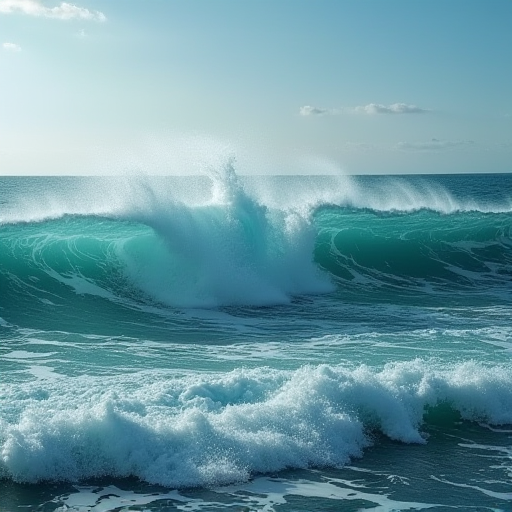
Why Do Tides Rise and Fall?
Tides are one of the most fascinating natural phenomena observed on Earth. They are the rhythmic rise and fall of sea levels caused by the gravitational interactions between the Earth, the Moon, and the Sun. Tides influence various aspects of life on Earth, from marine and coastal ecosystems to human activities such as fishing, shipping, and recreation. Understanding why tides rise and fall involves exploring the fundamental forces of gravity and the celestial mechanics that govern the interplay between these astronomical bodies.
The Gravitational Pull of the Moon and the Sun
The primary force responsible for the rise and fall of tides is gravity. The gravitational pull of the Moon has the most significant effect on Earth's tides, despite the Sun being much larger and more massive. This is due to the Moon's proximity to Earth.
The Moon's Influence
-
Gravitational Attraction: The gravitational pull of the Moon creates a bulge in the Earth's oceans on the side of the Earth facing the Moon. This bulge represents the high tide.
-
Opposite Bulge: A second bulge occurs on the opposite side of the Earth due to the inertia of the water. This is because the gravitational pull is weaker on the far side of the Earth compared to the center of the Earth, causing the water to be left behind as the Earth is pulled slightly toward the Moon.
-
Rotation of the Earth: As the Earth rotates on its axis, different areas of the planet pass through these bulges, experiencing high and low tides.
The Sun's Contribution
While the Moon has the most significant impact, the Sun also plays a crucial role in the tidal process:
-
Solar Tides: The Sun's gravitational pull creates its own tides, which are about half as strong as those created by the Moon. When the Sun, Moon, and Earth are aligned, the gravitational forces combine to produce higher high tides and lower low tides, known as spring tides.
-
Neap Tides: Conversely, when the Sun and Moon are at right angles relative to the Earth, the solar tide partially cancels out the lunar tide, resulting in lower high tides and higher low tides, known as neap tides.
The Tidal Cycle
Tides follow a predictable cycle due to the regular movements of the Earth, Moon, and Sun.
Diurnal and Semidiurnal Tides
-
Diurnal Tides: Some regions experience one high tide and one low tide each day, known as diurnal tides.
-
Semidiurnal Tides: Most coastal areas experience two high tides and two low tides each day, known as semidiurnal tides.
-
Mixed Tides: In some locations, the pattern is mixed, with different heights of tides occurring within the same day.
Lunar Day and Tidal Period
The lunar day, approximately 24 hours and 50 minutes, is the time between two successive high tides. This period is slightly longer than a solar day because the Moon is moving in its orbit around the Earth, creating a delay in the cycle of tides.
Factors Affecting Tides
Several factors can influence the height and timing of tides:
-
Coastline Shape and Features: The shape of the coastline and the ocean floor can amplify or diminish tidal effects. Narrow bays and inlets can experience higher tides due to the funneling effect.
-
Weather Conditions: Atmospheric pressure and wind can affect tidal heights. Low pressure and strong onshore winds can increase tide levels, while high pressure and offshore winds can have the opposite effect.
-
Earth's Rotation and Axial Tilt: The tilt of the Earth's axis and its elliptical orbit around the Sun also contribute to variations in tidal patterns.
Conclusion
Tides are a remarkable demonstration of gravitational forces at work on a massive scale. The interplay between the Earth, Moon, and Sun creates the predictable yet dynamic cycle of rising and falling sea levels. Understanding tides is crucial for navigation, coastal management, and the study of marine life. As our grasp of celestial mechanics and oceanography advances, so does our appreciation for the complex and coordinated dance of the tides.
